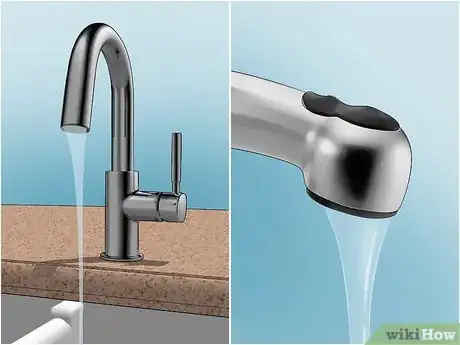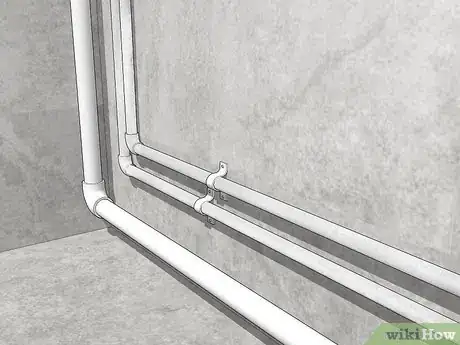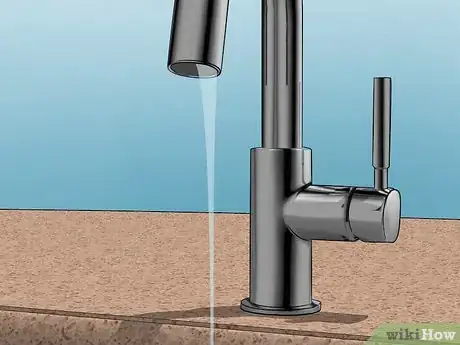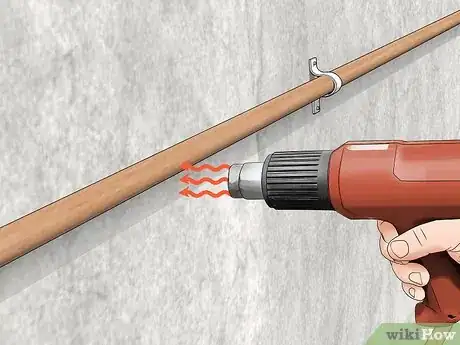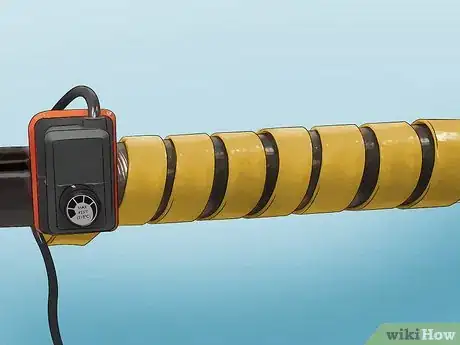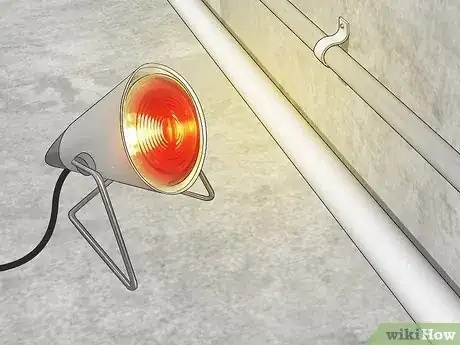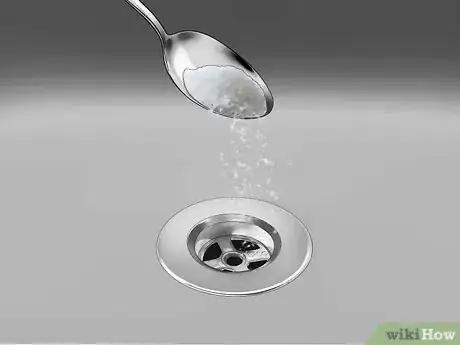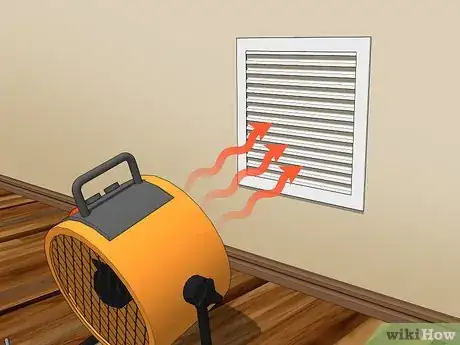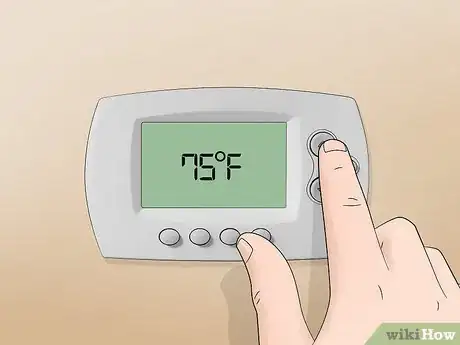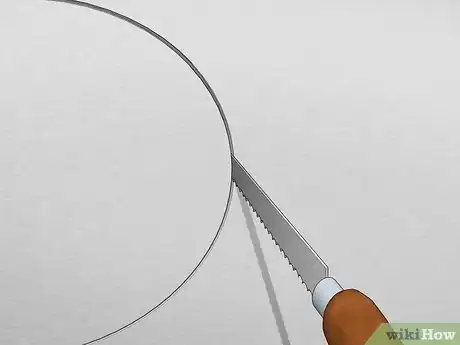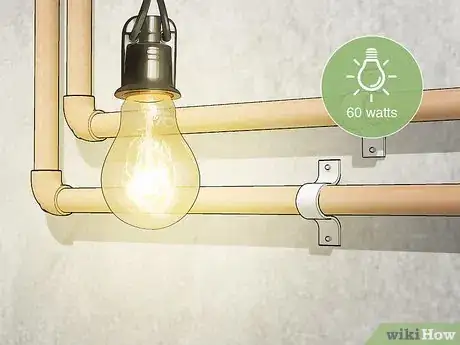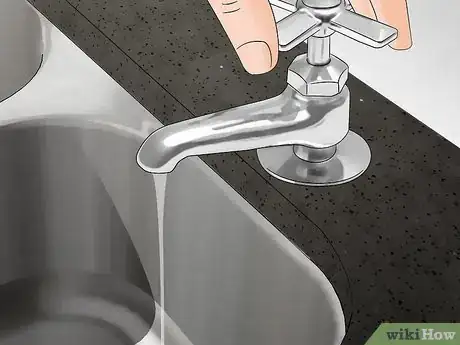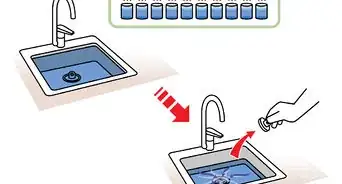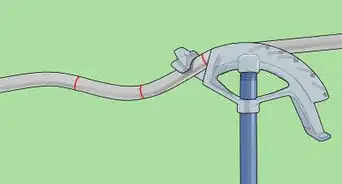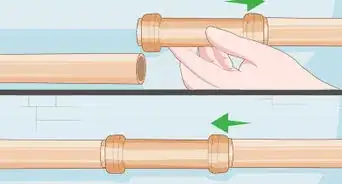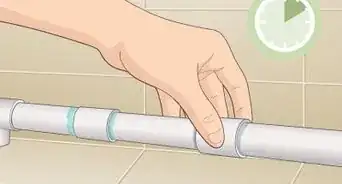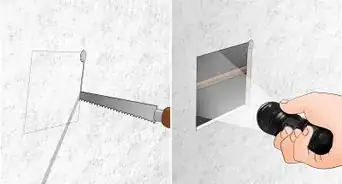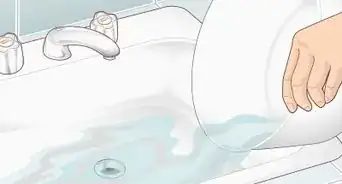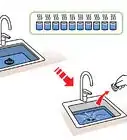This article was co-authored by David Balkan. David Balkan is a Professional Plumber, CEO of Balkan Sewer and Water Main Service, and President of Balkan Sewer and Drain Cleaning. As a hands-on owner of these companies for over 40 years, David is knowledgeable about water service lines, sewers, and drain line issues. David is a Committee Chairman of the Master Plumbers Council and has sat on the Executive Committee of the Sub Surface Plumbers Association of New York for over 30 years. His knowledge and solution-oriented approach contributed to Balkan Sewer and Water Main Service being the largest and most trusted service in New York City and the recipient of the 2017 Angie’s List Super Service Award.
There are 16 references cited in this article, which can be found at the bottom of the page.
wikiHow marks an article as reader-approved once it receives enough positive feedback. This article received 15 testimonials and 88% of readers who voted found it helpful, earning it our reader-approved status.
This article has been viewed 1,230,836 times.
If you turn your faucet on during winter and nothing comes out, you’ve probably got a frozen pipe. Water can freeze in your home’s pipes due to faulty taping, inadequate insulation, or (most commonly) ridiculously cold temperatures. If you’re worried, don’t be; thawing a frozen pipe is usually no big deal. To help you prevent damage to your home, follow these straightforward steps to thaw frozen pipes and prevent your pipes from freezing in the future.
Things You Should Know
- Turn your faucets on and look for leaks to narrow down the location of any frozen pipes and help them thaw.
- Warm the pipe with a blow dryer and wrap electrical pipe tape around it to thaw a pipe.
- Insulate your home and keep the heat on so that it stays at least 55 °F (13 °C) during winter to keep pipes from freezing.
- Avoid pouring boiling water or drain cleaners down your drains. These can increase the odds you end up bursting a pipe.
Steps
Locating Frozen Pipes
-
1Test your faucets to find frozen water pipes. If water runs through all your faucets except one, the dysfunctional faucet is the location of the frozen pipe. If you’re worried about frozen pipes, leave all the working faucets open slightly. A small trickle of running water from working faucets can prevent further freezing and help melt the ice.[1]
- Most homes have faucets on external walls too, especially on the front and back of the house.
-
2Presume it’s the pipes in the exterior walls if you have no water. If a large area of your house has no water, look in the most likely and accessible areas first before you start tearing apart walls. Since exterior walls end up bearing most of the cold, that’s the most likely location for frozen pipes. Keep narrowing down the search. Be sure to check:[2]
- Pipes in or near uninsulated crawlspaces, attics, or basements.
- Pipes near cold air vents or cold concrete.
- Outdoor valves and spigots.
- Outdoor pipes can freeze, but check these last, as most systems are designed to keep standing water out of these pipes.
Advertisement -
3Search for cracks and leaks to confirm busted pipes. Freezing water can cause pipes to crack from the change in pressure, usually splitting the pipe lengthwise or causing cracks in the joints. If you find an active leak, you’ve located the frozen (and unfortunately broken) pipe.[3]
- If you find a leak, close the main shut-off valve immediately. Call a plumber to replace the pipe, or fix it yourself if you are up to the task.[4]
-
4Feel or tap exposed pipes to confirm which section is frozen. Assuming there are no leaks or cracks, find the section of the pipe with frozen water using one of the following methods.[5]
- Feel the temperature of the pipe with your hand or use an infrared thermometer to locate areas significantly colder than other pipes.
- Tap the pipe with a screwdriver handle or other object, listening for a more solid, less "hollow" sound.
- If you rule out all exposed pipes in the affected area, skip to the section on unfreezing pipes inside walls.
Unfreezing Water Pipes
-
1Wait for the pipes to thaw on their own if there’s no rush. If this is a pilot house, vacation home, or you simply aren’t in a rush, just shut off the main water supply and wait it out. Your pipes will eventually thaw as the weather warms up and everything will go back to normal.[6]
- The main water supply is likely in your basement. Look for the large pipe coming into your home and connecting to your hot water heater. Close the valve on that pipe to shut your home’s water off.
-
2Shut the water off if your faucets produce no water. If you turn a faucet on and nothing comes out, it means at least one of your supply pipes is frozen shut. Turn the water main off to take the pressure off of the frozen pipe. If that pressure keeps building up, you could accidentally burst a pipe.[7]
- If water does come out of all of your faucets (even just a little), it’s better to leave the water open and run it than it is
-
3Leave the faucet slightly open and let the water run. Open the faucet attached to the frozen pipe, and open nearby working faucets to a trickle. Running water is much less likely to freeze than standing water. If the running water passes through or near a frozen area, it may even help thaw the ice over the course of an hour or two.[8]
- If you see any cracks in any pipe, turn off the main water supply to your house immediately and close all faucets.
- How long it takes for a pipe to thaw depends on how much ice is in the pipe, how big the pipe is, and how cold it is outside. Generally speaking, it should take at least a few hours to thaw.
-
4Use a hair dryer or heat gun to slowly thaw the pipe. If the pipe is exposed and you have a section that’s frozen, turn on a hair dryer and run it back and forth along the frozen pipe. Keep it moving and do not place the dryer directly against the pipe, as uneven or sudden heating can rupture the pipe. If your pipes are metal, you can use a more powerful heat gun instead of a hair dryer.[9]
- PVC pipes can be damaged at temperatures as low as 140 °F (60 °C). Never use a heat gun or anything stronger than a hair dryer.
- Outdoor valves often have fiber washers or other non-heat-safe materials inside them. Heat them slowly and cautiously.
-
5Wrap special heat tape around long lengths of frozen pipe. Purchase electrical heat tape designed for frozen pipes. Wrap the tape in a single layer around the length of the frozen pipe, then plug it into a power source. The tape consists of heating elements that warm up when turned on.[10]
- Do not overlap electrical heat tape. Wrap it around the pipe only once or in a spiral pattern.
- Do not worry about this damaging your pipes. This kind of tape is designed to keep the pipes safely warm, not so hot they’ll warp or break.
-
6Heat the surrounding air slowly over time. Position space heaters, bare incandescent light bulbs, or heat lamps in the room with the frozen pipe, near the pipe but not touching it. Hang up tarps or blankets to trap the heat in a smaller area, if necessary. For large rooms, use several heat sources to ensure safe, even heating of the pipe.[11]
- Do not leave any space heaters or heat lamps unattended. They can cause fires if they get knocked over or malfunction.
-
7Wrap the pipe in hot towels to thaw it quickly. Put on rubber gloves, and soak some towels in hot water. Wring them out, then wrap them securely around the frozen section of pipe. Replace with freshly soaked, hot towels every 5–10 minutes until the pipe thaws.[12]
- Do not leave cold wet towels around the pipes—that’s just going to make the towels freeze onto your pipe.
Thawing Drain Pipes You Can’t Access
-
1Add salt to frozen drains where you can’t reach the pipe. Salt lowers the melting point of ice, causing it to melt at colder temperatures (this is why you salt a sidewalk after heavy snow). Pour a tablespoon (15 mL) of salt down the drain of the frozen pipe, and wait for it to thaw the frozen water in the pipe.[13]
- You can try dissolving the salt in a 1/2 cup (120 mL) of boiling water first, but adding hot water to frozen ice can burst the pipe. It’s fast if it works, but it’s probably not worth risking it.
-
2Blow a fan heater into outdoor vents. If you can find an external vent, put down a fan heater blowing warm air into the vent. Use a cardboard box or tarp to minimize the amount of heat lost to the surrounding air.[14]
- Pipes often run alongside ductwork, so forcing warm air into the ducts can quickly thaw any pipes that are nearby.
-
3Turn up the central heating. Crank the heat in the house up 75–80 °F (24–27 °C) and wait 2-3 hours. The radiant heat that fills your home will warm up the walls and ceilings that are concealing your pipes.[15]
- Open closet and cabinet doors so the warm air circulates as close to the walls as possible.
-
4Cut a hole in the wall to reach pipes at risk of burstng. Unfortunately, this is often necessary to reach a frozen pipe before it bursts. Once you’ve narrowed down the likely area of the problem, use a keyhole saw or utility knife to cut a hole in the wall. Then, use any of the methods in this article to thaw the pipe and deal with the problem.[16]
- If this is a reoccurring problem, consider installing a cabinet door over the hole instead of fully repairing the wall, for ease of access next time this occurs.
Preventing Pipes from Freezing
-
1Insulate the pipes most likely to freeze. Keep pipes in cold areas wrapped with pipe insulation. If an electrical outlet is nearby, you can keep them wrapped with electrical heat tape and then plug the tape in whenever cold weather arrives.[17]
- Don’t use rags or other material to cover the pipes. Only use pipe insulation that’s designed for the task.
-
2Protect your home’s crawl spaces from wind and cold air. Check your crawlspaces and external walls for holes and repair them to minimize exposure to cold air. Use wind barriers or faucet covers to protect faucets and valves on the exterior of the house.[18]
-
3Heat cold and unoccupied areas to avoid freezing temperatures. During cold weather, turn on a 60-watt incandescent light bulb near the area of pipe that previously froze, or just below it. If used to warm crawl spaces and other unsupervised areas, make sure there are no flammable materials kept in the same space.[19]
- Don’t let your house temperature drop below 55 °F (13 °C) if you’re traveling or on vacation.[20]
-
4Leave a trickle of water running during blizzards. It is much more difficult for pipes to freeze if water is running through them since the water will usually travel through the pipe before it has time to freeze. During sub-freezing weather, keep faucets slightly open to allow a trickle of water.[21]
Community Q&A
-
QuestionWhat do I do if the pipe is unfrozen but water still doesn't flow out?
 wikiHow Staff EditorThis answer was written by one of our trained team of researchers who validated it for accuracy and comprehensiveness.
wikiHow Staff EditorThis answer was written by one of our trained team of researchers who validated it for accuracy and comprehensiveness.
Staff Answer wikiHow Staff EditorStaff AnswerYour pipe is still frozen. If the water isn't turning on, it's a sign that the supply line isn't getting water, which means something is either turned off or frozen. If you didn't simply forget to turn the water supply back on, that leaves frozen as the primary answer. Keep trying to unfreeze your pipe.
wikiHow Staff EditorStaff AnswerYour pipe is still frozen. If the water isn't turning on, it's a sign that the supply line isn't getting water, which means something is either turned off or frozen. If you didn't simply forget to turn the water supply back on, that leaves frozen as the primary answer. Keep trying to unfreeze your pipe. -
QuestionIf pipes are frozen should I turn the breaker off to the well?
 wikiHow Staff EditorThis answer was written by one of our trained team of researchers who validated it for accuracy and comprehensiveness.
wikiHow Staff EditorThis answer was written by one of our trained team of researchers who validated it for accuracy and comprehensiveness.
Staff Answer wikiHow Staff EditorStaff AnswerYes. Shut the well pump off if a pipe is frozen. Just know, you won't have access to fresh water until the pipe thaws, so you may want to tackle the frozen pipes sooner rather than later.
wikiHow Staff EditorStaff AnswerYes. Shut the well pump off if a pipe is frozen. Just know, you won't have access to fresh water until the pipe thaws, so you may want to tackle the frozen pipes sooner rather than later. -
QuestionOur outdoor faucet was set to drip, but the next day it's not dripping and the faucet will not turn. What happened and what should we do?
 wikiHow Staff EditorThis answer was written by one of our trained team of researchers who validated it for accuracy and comprehensiveness.
wikiHow Staff EditorThis answer was written by one of our trained team of researchers who validated it for accuracy and comprehensiveness.
Staff Answer wikiHow Staff EditorStaff AnswerThe "drip trick" doesn't work on outdoor spigots. Shut the water to that specific spigot off if you can. If you can't, just leave it alone and close the spigot once the faucet finally thaws.
wikiHow Staff EditorStaff AnswerThe "drip trick" doesn't work on outdoor spigots. Shut the water to that specific spigot off if you can. If you can't, just leave it alone and close the spigot once the faucet finally thaws.
Warnings
- Never use a torch to heat a frozen pipe. You can destroy the pipe and cause a fire.[22]⧼thumbs_response⧽
- Never pour drain cleaner or other chemicals down your frozen pipe, as they can burst the pipe by creating too much gas or heat. A small amount of hot water can be used as a last resort, but even this is risky.[23]⧼thumbs_response⧽
References
- ↑ https://www.in.gov/oucc/watersewer/tips-and-publications/preventing-frozen-pipes/
- ↑ https://www.masslive.com/news/2016/02/frozen_pipe_how_to_identify_a.html
- ↑ https://www.thisoldhouse.com/plumbing/21133681/how-a-frozen-pipe-bursts
- ↑ David Balkan. Professional Plumber & CEO of Balkan Sewer & Water Main. Expert Interview. 29 April 2021.
- ↑ https://www.seattle.gov/util/MyServices/DrainageSewer/StormsFlooding/FreezingWeather/IfPipesBreakorFreeze/index.htm
- ↑ https://lakewaymud.org/update/tips-for-thawing-frozen-pipes/
- ↑ https://lakewaymud.org/update/tips-for-thawing-frozen-pipes/
- ↑ David Balkan. Professional Plumber & CEO of Balkan Sewer & Water Main. Expert Interview. 29 April 2021.
- ↑ https://www.today.com/home/how-fix-frozen-pipes-blow-dryer-heating-pad-t124560
- ↑ David Balkan. Professional Plumber & CEO of Balkan Sewer & Water Main. Expert Interview. 29 April 2021.
- ↑ https://www.villageoflombard.org/486/Frozen-Water-Pipes
- ↑ https://www.austintexas.gov/department/cold-weather-tips-potential-freezing-weather
- ↑ https://www.homeandgardeningguide.com/repairs/plumbing/how-to-safely-unfreeze-pipe-bathroom-shower-drain/
- ↑ https://www.acmetools.com/blog/thawing-frozen-pipes-wall/
- ↑ https://www.redcross.org/get-help/how-to-prepare-for-emergencies/types-of-emergencies/winter-storm/frozen-pipes.html
- ↑ https://joneakes.com/jons-fixit-database/2113-OVERVIEW-Frozen-pipes-Tracing-thawing-preventing
- ↑ https://www.in.gov/oucc/watersewer/tips-and-publications/preventing-frozen-pipes/
- ↑ https://www.housebeautiful.com/uk/renovate/refurbish/news/a303/7-ways-to-weatherproof-your-home/
- ↑ https://www.michigan.gov/miready/be-informed/winter-prep/preventing-frozen-pipes
- ↑ https://www.in.gov/oucc/watersewer/tips-and-publications/preventing-frozen-pipes/
- ↑ David Balkan. Professional Plumber & CEO of Balkan Sewer & Water Main. Expert Interview. 29 April 2021.
- ↑ https://www.nytimes.com/1992/12/13/nyregion/home-clinic-to-thaw-plumbing-pipes.html
- ↑ https://www.nytimes.com/1992/12/13/nyregion/home-clinic-to-thaw-plumbing-pipes.html
About This Article
If you need to unfreeze water pipes, leave your faucets open slightly to help thaw out the pipes. If you find a leak, close the main shut-off valve to your house and call a plumber immediately. Otherwise, you can thaw out the pipe by wrapping the pipe in a single layer of thermal tape or blowing air from a hair dryer back and forth across the pipe. Pouring salt or warm water down your drains may also help thaw out the pipe faster. If the pipe is inside of a wall, blow a fan heater into the nearest vent. If you want to learn how to locate frozen pipes and prevent them from freezing again, keep reading the article!
